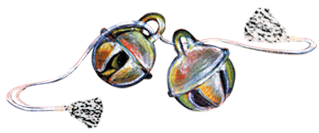HISTORY OF KATHAK
“Kathak” is among the seven major classical dances of India and one of the most dynamic theater arts in the world.
Kathak is most prevalent in North India. Kathak dates back to Vedic times – when epics of Rig-Veda the Mahabharat
& Ramayana were writtens several thousand years ago.
The name Kathak is derived from the Sanskrit word katha meaning story, and katthaka in Sanskrit means he who tells
a story, or to do with stories. The community of Kathaks (story tellers) narrated and performed in village squares and
temple courtyards, mostly specialized in recounting mythological and moral tales from scriptures and embellished
their recitals with hand gestures and facial expressions. Because of the association of this community with this style
of dance, got the name “Kathak”.
With the advent of mogul culture in around 16th century , Kathak moved from temples to royal courts of Hindu and
Muslim. Kathak became sophisticated chamber of art patronized by art loving rulers. Kathak went through major
changes in entire content. The practitioners of Kathak worked at refining its dramatic and rhythmic aspects –
delighting audiences with their mastery over rhythm (layakari) and stylized mime. The technique of Kathak today is
characterized by fast rhythmic footwork set to complex time cycle, pirouettes (spins) executed at lightening speed
and ending statique poses and the interpretative portion is based on mythological stories
What we see in Kathak today is beautiful blend of both traditions; expressive or devotional from temples and
spectacular rhythmic from the court rooms.
Kathak was essentially an art of the soloist or at most, two or three soloist performing with an occasional duet or
trio. Today development has encourage innovative work in field of Kathak. It is performed on large stages with group
choreography as well as elaborate stage settings and props and has become very popular and successful.
As in old other dance forms of India, Kathak also has two principal aspects :
- Nritta : technique inspired by rhythm intricate footwork, swift pirouettes , and elaborate yet subtle graceful,
gestures and body movements.
- Nritya : dance inspired by music and poetry where the dancers tells the story through mime and subtle facial
expressions.
There are three major schools or gharanas of Kathak recognized today :
- Jaipur Gharana emphasizes strength and technical mastery (Laykari) and give more stress on accuracy of foot
work (Tatkar).Demonstrations of long Kavit and Parans of Tabla and Pakhawaj.
- Lucknow Gharana accentuates graceful, subtle gesture and expression. Small composition of Toda/Tukdas are
performed. It has own style of performing That, variety of Gatnikas and Gat Bhav.
- Benares more concentration is paid in turning out the Bols by feet.

